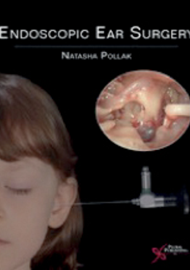This book, published in March 2014, aims to explore the emerging role of endoscopy in the evolution of otological surgery, and details both basic and advanced endoscopic ear surgery techniques in clear text supplemented by beautiful images.
It opens with a captivating chapter on the history of endoscopy, a topic that will be familiar to colleagues with an interest in medical history. The binocular microscope, which revolutionised otological surgery in its time, is mentioned. This historical perspective is an apt introduction to the book, which finishes by making predictions about the future of endoscopic ear surgery. More about that later.
The colour photographs in this 171 page hardback book are of high quality. The chapters cover different aspects of the use of the endoscope, each giving interesting insights to the authors’ personal practices, which, whilst not always evidence-based, are certainly thought-provoking and clearly illustrated. There are handy tips for the use of the endoscope in second look surgery and the management of retraction pockets; a lengthy chapter on posterior fossa surgery, and some interesting uses of the laser in both office-based and theatre-based procedures.
In addition to clear descriptions of operative methods, the book helpfully describes handling of the otoendoscope and operating room set-up, removing any mystery from the technique. For this reason, the book, currently available for £107 on Amazon UK, would be a useful purchase for any otolaryngologist keen to develop their practice.
The book summarises by extolling the virtues of endoscopic ear surgery, in terms of its minimal access approach, wide view, and preservation of normal anatomy. I was pleased to see that stereoscopic vision was proposed as a future development in this field, as I’ve often wondered about loss of depth perception when using a monocular endoscope around the delicate structures of the middle ear cleft.





